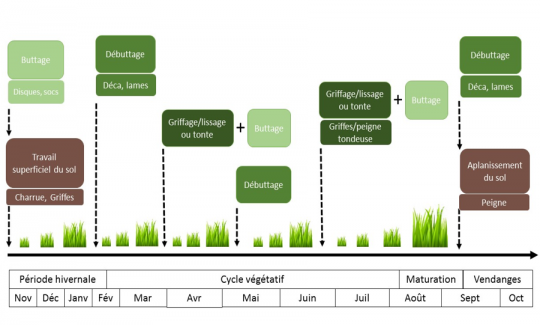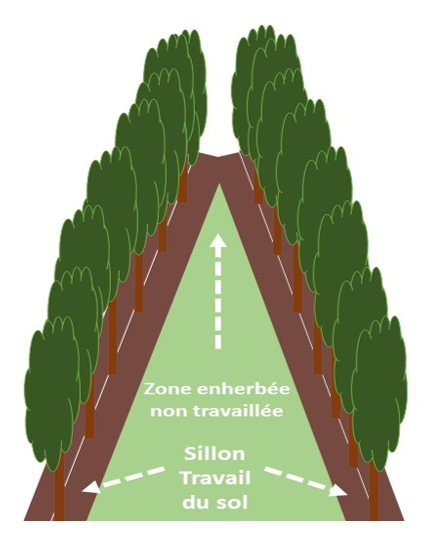Tillage should be adapted to the nature of the vineyard, so the chosen method will vary depending on row width and grass cover (totally grassed, partially grassed or ungrassed, sown or spontaneous). While tillage and weed management are highly dependent on weather conditions, it is still possible to establish an order of passage and a plot order.
An order of priority can be determined based on the plots' intrinsic characteristics, such as the type and texture of the soil. It is advisable to keep a closer eye on heavy clay or silty plots, tilling them when the weather is suitable and the soil has sufficiently dried out, since access to these plots is likely to be reduced. If soil that has not dried out is ploughed too quickly, it can have serious consequences, such as asphyxiation and compaction.
Plots with predominantly sandy soil are easier to till because they retain much less water and have better drainage. These plots can therefore be ploughed last or when it is not possible to till clay plots. The idea is not to miss the window of opportunity for plots for which access is limited.


